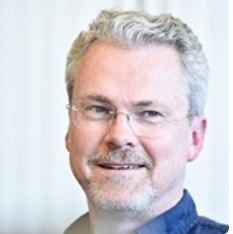
Speaking at NutraIngredients’ Healthy Ageing webinar, Peter Wennström outlined strategies to appeal to those with additional nutritional needs but did not identify with the ‘elderly’ or ‘old people’ labels.
“Who are you targeting?” asked Wennström, the founder and senior consultant at the Healthy Marketing Team.
“You have consumers that are concerned about their condition. They are really looking for support or help with their problem.
“Then you have the early adopters, who are more into the lifestyle and want to follow trends. There you would focus more on the ‘trendiness’ or ‘newness’ of the ingredients or product.”
“You also have the more rational consumers, who have a high awareness of what works. Then finally, you have the traditional consumer, who aren’t necessarily looking for new things.”
Wennström went on to explain that firms should market only when where there was an awareness and understanding of the concept and its relation to the target consumer.
“That’s where most companies go wrong,” he commented. “They try to take something that’s quite novel and throw it into the mass market.”
1 in 4 over 60
The rise in products targeted at the older population has forced firms to engage in a more targeted industry conversation around the issue, given the population of people over the age of 60 continues to grow and people are living longer.
Current EU estimates place the total population of those over 64, to increase from 511 million in 2016 to 520 million in 2070.
United Nations population data, suggests the continent is home to the oldest populations in the world where one in four of all Europeans are aged 60 and over.

But while the statistics make for worrying reading, Wennström advocates a shift in approach, where he points out that in the west, there is negativity about ageing.
“If you look at marketing in Asia, the talk is age-positive with the golden and silver age mentioned.
“People are depicted on packaging as ageing as they are proud to age. In the West, there is the use of ‘stealth’ methods that focus on needs and aspirations.”
Wennström was joined by Patrick Coppens, director of regulatory and scientific affairs at Food Supplements Europe, in a panel discussion, where he highlighted the appetite for knowledge was giving rise to possibilities for consumer self-diagnosis.
“The opportunities for manufacturers are tremendous to better personalise products and place them on the market. This will probably be the revolution,” he said.
“It bypasses almost all traditional ways of selling products. In the same way the peer-to-peer economy has bypassed the normal economy. It is a different way of communicating to consumers.”
“However you will always have the different levels of knowledge and the different capacities to understand what is being communicated amongst the broad consumer range. It will never target all consumers.”
“It is important to empower the consumer,” said Coppens. “I see the regulatory environment lagging behind in this aspect as it is unable to cope with this.”
Tech and innovation
Wennström drew on his experiences in attempting to make sense of this rapidly evolving landscape, highlighting innovation as something healthy agers were embracing as they looked to take charge of their own health and lifestyle.
“With the help of technology, mobile devices and the feedback given, healthy agers can then monitor their own health in a more precise way. That type of consumer, people who are actually taking action is rapidly increasing.
“This is really helping to drive this market. You could say that you have more and more professional nutrition consumers, who know what they are consuming and act on it.”
With one eye on the future, Wennström added, “Manufacturers must keep up with the consumer. One bit of marketing advice we give is that we don’t rescue consumers, we empower them to support their lifestyles.
“70 is the new 20 mentally as you don’t have any kids and you don’t need to go to work. Your health is more like a 50 year old. In that sense, you need to keep up with these consumers.”
To hear the full program of sessions featured at the Healthy Ageing webinar, please visit the Healthy Ageing 2019 website.




